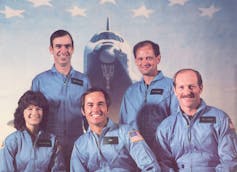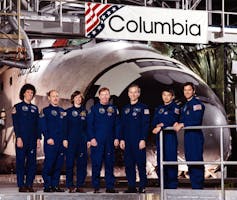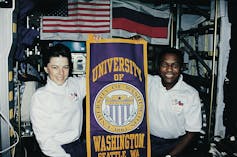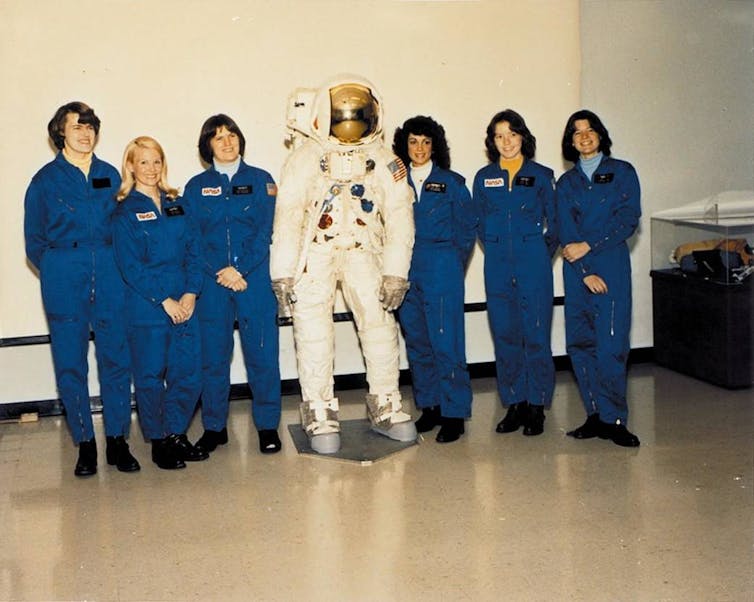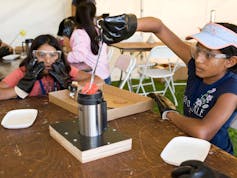 |
| The Science of Mortal Kombat - Premieres February 18th |
The original limited series, The Science of Mortal Kombat, premieres Feb. 18, guest starring reigning UFC Heavyweight Champion Daniel Cormier, and marks Nerdist's largest production ever, highlighting the creatively brutal and visually stunning gameplay which the best-selling Mortal Kombat franchise is known for.
The Science of Mortal Kombat will feature host Kyle Hill, professional Science Communicator and host of Nerdist's hit show Because Science, as he breaks down the science behind iconic Mortal Kombat 11 Fatalities, Scorpion's deadly spear attack, and powerful Krushing Blows with the help of special guests – Cormier and former WWE Champion, CM Punk.
Kyle and YouTuber and Mythbuster Allen Pan will utilize special super slow-motion cameras allowing for enhanced visuals to analyze and break down each iconic fight move in Mortal Kombat 11, such as the pressure and strength needed to break bones, the scientific analysis of a character's superhuman abilities, and much more.
The Trailer:
Mortal Kombat 11 is the latest installment in the critically-acclaimed franchise, developed by award-winning NetherRealm Studios, and is scheduled for release beginning April 23 for PlayStation4 computer entertainment system, PlayStation4 Pro computer entertainment system, the Xbox One family of devices including the Xbox One X, Nintendo Switch system and PC.
To learn more about Mortal Kombat 11, please visit www.mortalkombat.com
About Nerdist:
Nerdist is a multi-platform media and entertainment network for fans of genre and pop culture content. With flagship content including Nerdist News hosted by Jessica Chobot, weekly shows Because Science and The Dan Cave, and daily in-depth editorial coverage, Nerdist reaches millions of people every day on Nerdist.com and on leading platforms including the premium streaming service Alpha, YouTube, and Facebook.
Nerdist is owned by Legendary Entertainment and is part of Legendary Digital Networks, which also includes Geek & Sundry and Amy Poehler's Smart Girls.
About Because Science:
How hot is a lightsaber?
Why does Captain America's shield bounce?
How much energy does it take Thanos to throw a moon?
Nerdist science editor Kyle Hill answers questions about fictional phenomenon using real-world science in vlogs, livestreams, and a weekly show, whose popularity has grown exponentially since its launch in 2018. Kyle created the popular YouTube channel, which rocketed to 100,000 subscribers in just two weeks, and has since grown to over 750,000 subscribers with more than 150 million views. To date, fans have watched nearly one billion minutes of Because Science, or over 1800 years! Kyle's work has appeared in WIRED, Scientific American, and The Boston Globe. He has hosted MythBusters: The Search and appeared as an expert on Bill Nye Saves the World, FOX News, and BBC World Radio.
About NetherRealm Studios:
NetherRealm Studios is a leader in the development of interactive entertainment, and the creator of the billion-dollar Mortal Kombat franchise. Mortal Kombat has spawned two theatrical films, multiple television series, and has sold over 42 million games to date. Located in Chicago, Illinois, the award-winning NetherRealm team has been working and creating games together since 1992.
Additional information about NetherRealm Studios can be found at www.netherrealm.com.
SOURCE: Legendary Digital Networks


















